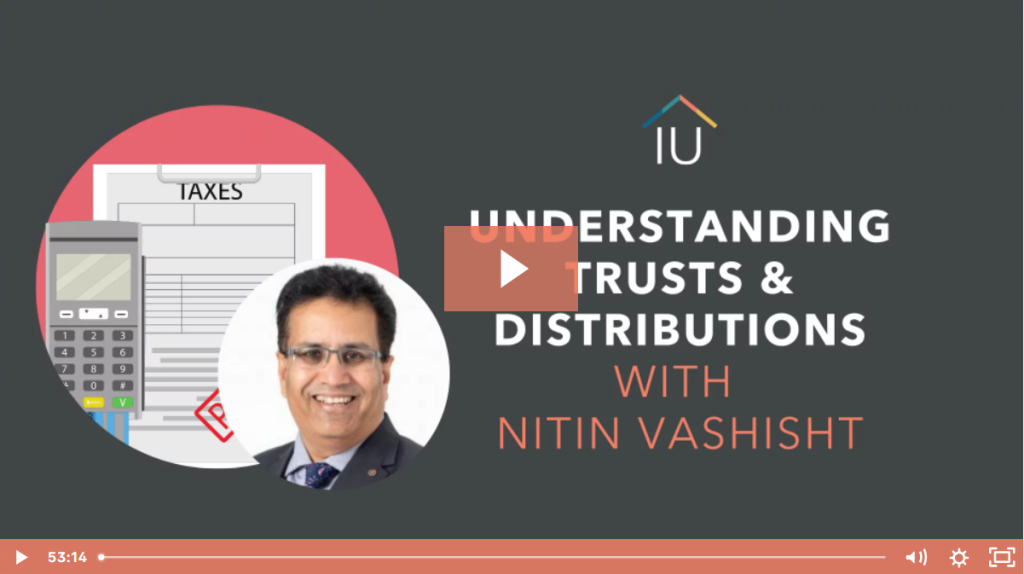TOP FIVE THREATS THAT CAN DESTROY YOUR FAMILY WEALTH
The ATO has recently announced a major crackdown on some aggressive trust distribution practices. As a result, many widely used trust distribution strategies can now be deemed tax avoidance, with ATO invoking a 40-year-old Sec 100A.
Why are trust distribution changes important to you as a Trustee?
ATO can apply the provision retrospectively, and you may be at risk of ATO audits for trust distributions from 2014 onwards. And any distributions denied by ATO will be deemed tax avoidance and taxed at 47%.
As a Trustee of a Discretionary Trust will need to evaluate the risk of ATO audit for past years and recalibrate your trust distribution strategies from 2022 onwards. With the new changes, you may not be able to stream income to your family in the same manner as before.
Which trust distribution strategies are high-risk?
Trust distributions to a person other than its actual economic beneficiary are high on ATO’s hit list. Such distributions involve an agreement, arrangement, or understanding that the money be reimbursed to its intended economic beneficiary, usually the controller of the trust.
In other words, a beneficiary in a lower tax bracket is given the distribution. After tax money is then funneled back to the intended beneficiary. Often, such distributions are done with the primary intention to save tax and have no sound commercial or family reason.
Examples:
1. Distribution by a Mum & Dad Family Trust to an adult child with a low income. The money distributed is then used to pay for family expenses or is otherwise gifted, loaned back, or used to pay the liabilities of parents. e.g. private school fees, mortgage
2. Fully franked dividends streamed to non-resident families (no more tax to pay), who then gift it back to the resident family members

Watch Nitin’s Interview with Ian Ugarte of https://ianugarte.com.au on the Trust Distribution Changes
https://smallisthenewbig.wistia.com/medias/jf14w211i7
Low-risk trust distribution strategies?
Distributions that are in the ordinary course of family dealings where the person receiving the distribution enjoys the economic benefit have a low risk of trouble from ATO. Such distributions must be explainable as customary family transactions or have a commercial objective and not be guided mainly by a tax advantage as their primary purpose.
What constitutes ordinary family dealings is an evaluative standard to be applied to the facts of each case. It may present challenges due to cultural differences and interpretations of what is an ordinary family practice.
Examples of low-risk distributions
1. A trustee distributes a share of trust income to the adult child. The distribution is paid into a bank account in the child’s name. It is used to fund the child’s lifestyle or higher education (i.e., living expenses or university fees).
Such distribution is low-risk as it helps children economically in a typical family arrangement, and the child enjoys the economic benefit of the distribution. Any tax savings will be an ancillary advantage, not the primary purpose.
2. The Trustee distributes a share of trust income to a non-resident. The distribution is paid into an offshore account in the non-resident’s name. It is used to fund the non-resident’s lifestyle (i.e., to pay for living expenses).
Medium risk trust distribution strategies?
Medium-risk distributions are less likely to draw the attention of ATO as compared to the high-risk zone distributions. However, ATO may still make enquiries to test the validity of the distributions against the anti-avoidance provisions.
Such transactions may need additional information and reasoning based on particular facts and circumstances to justify them as ordinary family dealings.
Examples of medium-risk distributions
1. The Trustee distributes a share of the trust income to the adult child. The child is at university, works part-time, lives at home, and has agreed to pay arm’s length board to their parents. The Trustee discharges part of the entitlement by paying the board to the parents.
In this case, it may be possible to argue that the board is a legit expense of an adult child and not the responsibility of the parents. The child enjoys the economic benefit by using the distribution to discharge his boarding liability towards his parents.
2. The Trustee distributes a share of trust income to a grandparent. The distribution is paid into a bank account in the grandparent’s name and is used to pay for their grandchildren’s private school fees.
ATO would likely view these costs as parental costs rather than the cost of grandparents. ATO will need to be satisfied if it is a customary family objective for grandparents to pay school fees. If this is repeated every year, the risk will increase if the grandparents are in a lower tax bracket.
Are Trusts still relevant as a tax-effective structure?
Discretionary trusts have long been a vehicle of choice for Australians to own their business and investment assets due to the low compliance and ability to stream income in a tax-effective manner. The ATO scrutiny of trust distributions.
What ATO is targeting are aggressive strategies where tax is evaded by diverting the distribution to a family member who is not the real economic beneficiary to gain a tax advantage. There is good scope for legit tax planning using trusts.
Trusts still remain an excellent vehicle for asset protection, tax planning, and estate planning. However, any aggressive trust distribution strategies of the past will need to be recalibrated and the risk of ATO audit assessed.
What should you do next:
1. Discuss the risk profile of your trust distributions with your accountant and recalibrate your trust strategies for 2022 and beyond.
2. Document the reasons for making the distribution with reasons to justify family objectives.
3. Do a Trust distribution resolution before 30 June xx to create a present entitlement? Not doing so can result in the Trustee being taxed at the maximum rate of 47%.
4. To the extent possible, distribute the money physically to the bank account.
5. Document any working capital reasons for any unpaid trust distributions
Book an Appointment with Nav Accountants to discuss the Trust Distribution strategies by clicking here.
Back to blogs




